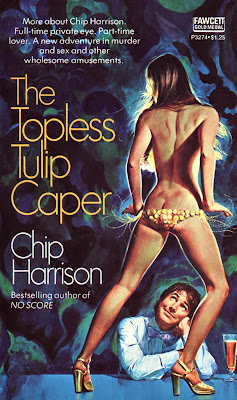Agatha Christie's A Pocket Full of Rye (1953) features Miss Marple (though she doesn't make her first appearance until nearly half-way through) in a novel for the sixth time.
As Vanessa Wagstaff and Stephen Poole say in Agatha Christie: A Reader's Companion "[Miss Marple] quickly forges a highly effective partnership with the unusually receptive and astute Inspector Nelle, who later assists Poirot in Third Girl (1966)."
Wagstaff and Poole also call A Pocket Full of Rye "one of Christie's best novels, with all the classic ingredients of a Miss Marple murder...."
On the other hand, Jacques Barzun and Wendell Hertig Taylor in A Catalogue of Crime say, "Rather tired Christie. Miss Marple officiates. The murder is of a gent in an office, by poison. The scene is full of housemaids and annoying indirections by Miss Marple."
Where JB and/or WHT fail to mention the two murders which follow the gent's in his office Wagstaff and Poole seem rather comically easy to please.
A Pocket Full of Rye notably shows Christie questioning the Golden Age's Taylorian obsession with time management. A character says, "One doesn't look at clocks the whole time."
I don't have any evidence to show that Christie ever read Marie Rodel's Mystery Fiction: Theory and Technique (1952) in which she says, "Insofar as the rules of the game are concerned, an insane murderer represents cheating on the author's part, because the reader cannot be expected to figure out for himself the murderer's mental processes," but Christie seems as though she has taken the lesson to heart. Inspector Neele says, "I'm going by sober facts and common sense and the reasons for which sane people do murders."
Certainly not a bad book but sloppily put together -- characters and red herrings are introduced but are often allowed to simply slip away. Rather like the case of the four-and-twenty blackbirds, A Pocket Full of Rye feels half-baked.
One dagger out of four.








